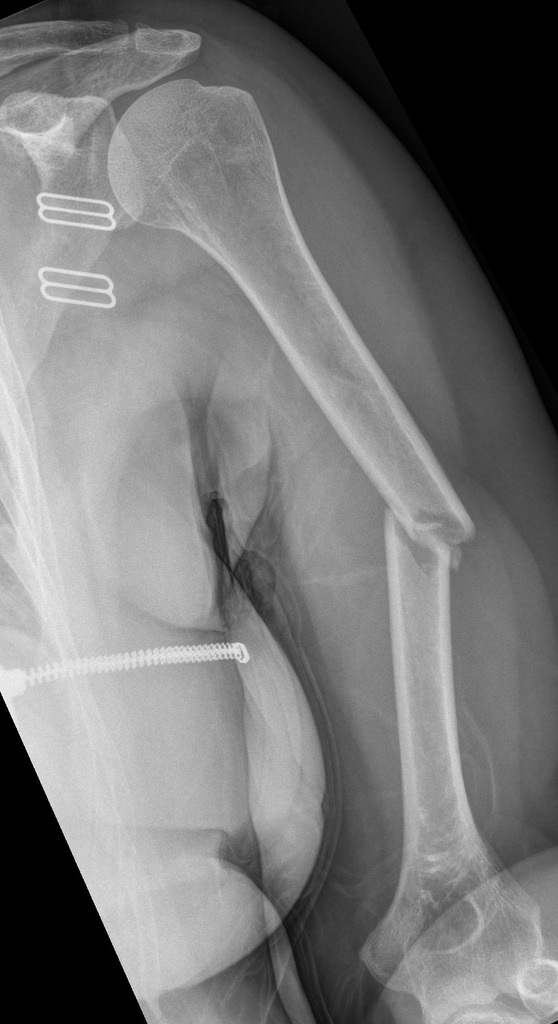Müller AO Classification of the Humeral shaft fracture
Jump to navigation
Jump to search

| Müller AO Classification of the Humeral shaft fracture | |
| ICD-10 | S42.2-S42.4 |
|---|---|
| ICD-9 | 812 |
| eMedicine | emerg/199 orthoped/271 orthoped/199 |
Editor-In-Chief: C. Michael Gibson, M.S., M.D. [1]; Associate Editor(s)-in-Chief: Mohammadmain Rezazadehsaatlou[2].
Overview[1][2][3]
The injuries of the ball-and-socket shoulder joint considered as the Humeral shaft fracture. It is more common among the elderly population following a low energy trauma such as falling. Meanwhile, A few people experience the axillary nerve damage such as reduced sensation around the middle deltoid and/or axillary artery involvement.
Müller AO Classification of the Humeral shaft fracture
The Humeral shaft fracture can be classified AS:
- Anatomical location: proximal, middle or distal third
- Fracture pattern: spiral, short oblique, transverse or comminuted
- Degree of displacement
- Presence of soft tissue damage (open or closed)
Meanwhile, the Müller AO Classification is a well known classifying system for the fractured bone published in 1987.
| Type | Group | ||
|---|---|---|---|
| 1 | 2 | 3 | |
| A - Simple fractures | Spiral | Oblique ≥30º | Transverse < 30º |
| B - Wedge fractures | Spiral wedge | Bending wedge | fragmentory wedge |
| C - Multifragmentary fractures | intact segmental | fragmentary segmental | |
See also
References
- ↑ Harkin FE, Large RJ (November 2017). "Humeral shaft fractures: union outcomes in a large cohort". J Shoulder Elbow Surg. 26 (11): 1881–1888. doi:10.1016/j.jse.2017.07.001. PMID 29054684.
- ↑ Schoch BS, Padegimas EM, Maltenfort M, Krieg J, Namdari S (September 2017). "Humeral shaft fractures: national trends in management". J Orthop Traumatol. 18 (3): 259–263. doi:10.1007/s10195-017-0459-6. PMC 5585093. PMID 28484909.
- ↑ Schwab TR, Stillhard PF, Schibli S, Furrer M, Sommer C (April 2018). "Radial nerve palsy in humeral shaft fractures with internal fixation: analysis of management and outcome". Eur J Trauma Emerg Surg. 44 (2): 235–243. doi:10.1007/s00068-017-0775-9. PMC 5884898. PMID 28280873.